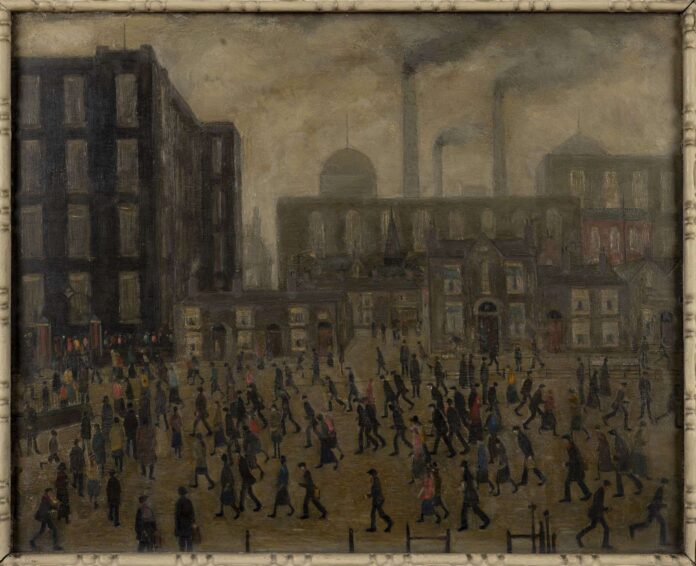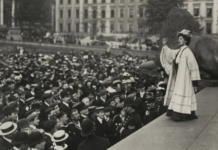A Lowry painting sold to the editor of the Manchester Guardian for just ten pounds could be sold at auction for a million
L S Lowry’s early masterpiece Going to the Mill was painted a hundred years ago and, quite remarkably, has been in the same private family collection for all but one of those hundred years.
It was acquired directly from Lowry by the journalist A.S. Wallace, an editor at the Manchester Guardian who had illustrated three of Lowry’s works in the special ‘Manchester Civic Week’ supplement published by the paper.
Civic Week was held from the 2nd to the 9th of October 1925, ostensibly to celebrate Manchester’s industrial success, but also with an ulterior motive to discourage the city’s disgruntled workers from going on strike.
During Civic Week, Lowry’s works were displayed in Lewis’s department store, where they were mostly passed by – despite the favourable reviews the Guardian had given his first solo show in 1921.
A.S. Wallace, however, fell for Lowry’s depictions of the ‘lovely, ugly town’ (to borrow from Dylan Thomas’s description of his hometown of Swansea), striking up a friendship with the artist and asking to buy one. Lowry duly obliged: Going to the Mill is marked on the back as being £30 – Lowry let Wallace have it for £10. If not his first ever sale, this has to have been one of his earliest.
He also threw in an additional work – The Manufacturing Town. The Wallace family still have Lowry’s letter of 9th November 1926, in which the artist writes: ‘Many thanks for your letter and cheque £10. I am very glad Mrs Wallace likes the picture Going to Work and take the liberty of asking you to please accept The Manufacturing Town as a souvenir of the Civic Week. I can assure you that it will always be with great pleasure that I shall think of that Saturday morning.’
The latter painting was sold by the Wallace family – with Lowry’s blessing, as he understood that a new generation of the family needed help getting set up – and is now in the collection of the Science Museum in London. Going to the Mill was kept – recently being on long term loan to Pallant House Gallery, Chichester, and only comes to market now as a further generation finds themselves in need of a ‘leg up.’
Going to the Mill is the epitome of a 1920s Lowry, when he truly becomes a unique voice. In the overall smoky, sooty quality of the sky and buildings – it will be a few years yet before Lowry begins to stage his visions of the city against isolating backgrounds of plain flake-white
The painting shows the influence of his teacher, Alphonse Valette, who had been drawn to Manchester precisely for its grit and the Romantic quality of its dark streets and thick polluted skies, the poetic fallacy of heavy-set architecture shrouded in smog, from which individual stories emerged, lamp-lit for moments, before being swallowed up by the gloom. Yet Lowry holds our attention to these individual lives much longer (and this is eventually the function of those white backdrops, to separate individuals from the mass and to hold them in time)
The piece shows us that Lowry was more than just of ‘matchstick men and matchstick cats and dogs’ as the old pop song goes – this is an artist of true dexterity who is making a deliberate formal choice, abstracting the figure, in order to express a concept, the sense of a life lived in even the smallest, most incidental figure.







